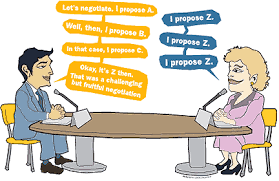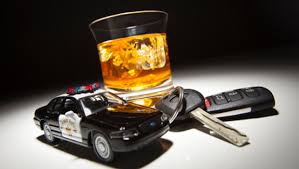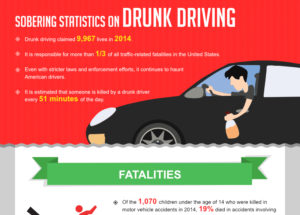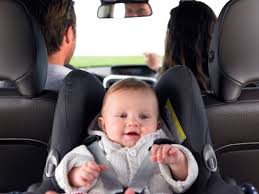
Many people wonder what is the best thing to do after a car accident to help preserve their case and make sure they are crossing their T’s and dotting their I’s. Here are the top things you should do following a car accident to make sure everything goes smoothly in case you have a personal injury car accident case and need to hire a Seattle car accident injury lawyer.
- Take pictures of the car accident – there is nothing more telling of how a car accident actually happened then a picture of where each car is right after the car accident and the damage to each car. Make sure to take pictures of the road, your car’s placement, the other car’s placement, and the damage to each car. These pictures can tell who is at fault, how hard the impact was, and the conditions of the road at the time of the collision.
2. Get witness contact information – some times car accidents may seem cut and dry but that all can change when the other driver talks to their insurance company. A witness who saw the car accident that may be in another car or a pedestrian can help convey what actually happened in the car accident and who had the red light or who had the right of way. Getting their phone number could be the difference in who is deemed at fault. These people may leave once they see everyone is ok or have things under control so it is important to look for these people quickly.
3. Call the police – it’s not always necessary to have the police come to a car accident and exchanging information may work just fine, however, it is important to call and file a police report if you are hit by someone and they leave the scene without exchanging insurance information or they don’t have insurance, as you may need to by contract law due to your car insurance and uninsured motorist policy, that you will need to use. Police reports are not 100% determinant of who is at fault for a car accident as the police did not actually see the car accident happen, however, they can act as another witness who saw the scene of the car accident and collects witness information and insurance information strengthening your case.
4. Exchange information with the other driver – It is very important to get the other person’s insurance information at the scene of the car accident. If the person says they don’t want to go the insurance route, you should push for their insurance. Not going the insurance route can severely hurt your case if you are injured and need to find the person to determine if they actually had insurance so that you can use your uninsured motorist insurance policy to cover your damages.
Most people try to avoid insurance because they don’t want to hurt the other driver financially, but this is the reason everyone has insurance so they don’t have to pay anything more than their premium every month or 6 months. Not going the insurance route only hurts the injured victim and doesn’t save the other person money, who otherwise would have only had to pay an increase in premium for a car accident that was their fault. You pay more going this route as it is much harder to for you to get your bills paid timely and get the compensation you need and deserve for medical bills, lost wages, pain and suffering, and property damage caused by the other person in the car accident.
5. Call an ambulance or take yourself to urgent care – If you are injured in the car accident, it’s important to get checked out by a doctor immediately to make sure you are ok. Car accidents can cause severe injuries to your neck, brain, and other parts of your body that need to get checked out right away. It’s best to go to urgent care right after a car accident if possible to get checked out. You can go the next day if it is too late at night. Urgent care usually has less people and can get you evaluated quicker than the emergency room. If your car is not driveable and you are severely hurt, call and ambulance immediately.
6. Call a Seattle car accident injury lawyer – It is important to preserve your case and make sure everything is in line and a Seattle car accident injury lawyer can make sure you are doing everything necessary with your insurance company to do this. Additionally, the defendant’s insurance will not pay for your medical bills until you settle with them (unless you were a pedestrian, bicyclist, or passenger and the at fault driver had personal injury protection (PIP) auto insurance coverage), this is why it is extremely important to know how your medical bills are going to be paid without having them go to collections and have a plan. A personal injury lawyer will be able to give you all the options to make sure your medical bills get paid or are not sent to collections. Options include using your car insurance personal injury protection (PIP) policy to pay for your medical bills, medical insurance, or having the provider wait to get paid out of the settlement.
7. Call your insurance company and report accident – It’s very important that you report the car accident to your own insurance company to set up your claim and document your case. You most likely have insurance coverage that you will need to use to help your case so you need to report it to your insurance company. Your rates should not go up because of a car accident that was not your fault. If for some reason they try to say that your rates are going up, you should talk to an agent on the phone and tell them you are going to go to another insurance company. I am sure they will change their minds and keep your rates the same, they want your premium every month.
If you or someone you know were injured in a car accident, give Cherin Law Firm, PLLC a call today for a free consultation on the phone 206 850-6716.


 Norway is dead serious about stopping drunk driving and preventing senseless deaths and injuries related to car accidents. Norway’s .02 BAC level basically means that you cannot even have one drink and drive, otherwise you could potentially lose your drivers license for one year, lose one month’s salary, and go to jail. If your BAC is between
Norway is dead serious about stopping drunk driving and preventing senseless deaths and injuries related to car accidents. Norway’s .02 BAC level basically means that you cannot even have one drink and drive, otherwise you could potentially lose your drivers license for one year, lose one month’s salary, and go to jail. If your BAC is between  Dealing with insurance companies is no fun and by hiring a personal injury lawyer, you can relax and trust that your going to be getting the max amount for your case and your medical bills are getting paid or will be paid soon. It takes the guessing game out of so much of your case allowing you to focus on healing and living your life, which is already a lot to do.
Dealing with insurance companies is no fun and by hiring a personal injury lawyer, you can relax and trust that your going to be getting the max amount for your case and your medical bills are getting paid or will be paid soon. It takes the guessing game out of so much of your case allowing you to focus on healing and living your life, which is already a lot to do. Washington state has laws that state that bars and restaurants will be liable for over serving their patrons and share financial responsibility for any accidents that their over served patrons cause to others. This is known as dram shop laws.
Washington state has laws that state that bars and restaurants will be liable for over serving their patrons and share financial responsibility for any accidents that their over served patrons cause to others. This is known as dram shop laws. Washington State has a minimum sentencing guideline for first offenders who drink and drive with BAC under .15 of one day in jail and 90 day license suspension for first offenders, 30 days and two year license revocation for a second DUI, and 90 days and three year license revocation for a third DUI, if they occur within seven years of each other.
Washington State has a minimum sentencing guideline for first offenders who drink and drive with BAC under .15 of one day in jail and 90 day license suspension for first offenders, 30 days and two year license revocation for a second DUI, and 90 days and three year license revocation for a third DUI, if they occur within seven years of each other. 1,921 people died in drunk driving car accidents from 2003-2012 in Washington State according to the
1,921 people died in drunk driving car accidents from 2003-2012 in Washington State according to the  However, Uber pool is increasingly creating a hazard to Uber drivers as the Uber driver gets notified of a possible Uber pool ride in the middle of a trip with another passenger. Uber pool passengers select that they want a discounted ride by agreeing to possibly ride with another passenger. However, there may or may not be another passenger depending on if the driver gets notified that there is another passenger that they must pick up.
However, Uber pool is increasingly creating a hazard to Uber drivers as the Uber driver gets notified of a possible Uber pool ride in the middle of a trip with another passenger. Uber pool passengers select that they want a discounted ride by agreeing to possibly ride with another passenger. However, there may or may not be another passenger depending on if the driver gets notified that there is another passenger that they must pick up. Washington State has one of the strictest laws on child car safety. The law was created in response toa Walla Walla parent, Autumn Alexander Skeen who lost her four-year-old son, Anton Skeen in a rollover collision. Anton was using a seat belt in accordance with state law at the time. Yet, because seat belts are built for adult bodies, he slid out of his seat belt and was thrown from the vehicle and crushed in the collision.
Washington State has one of the strictest laws on child car safety. The law was created in response toa Walla Walla parent, Autumn Alexander Skeen who lost her four-year-old son, Anton Skeen in a rollover collision. Anton was using a seat belt in accordance with state law at the time. Yet, because seat belts are built for adult bodies, he slid out of his seat belt and was thrown from the vehicle and crushed in the collision. One of the ways to do this is to teach them that they are never allowed to cross or enter the street without you or an adult holding their hand. Tell them that this is very important to you and your family. Tell them that they will be in big trouble if they are caught doing this and will lose all outdoor privileges if they do. Regularly walking around and holding your child’s hand can reinforce the need to always hold your hand while walking across streets. They realize it is a privilege to walk across the street and dangerous so they need you to reinforce this by always holding their hand when crossing streets.
One of the ways to do this is to teach them that they are never allowed to cross or enter the street without you or an adult holding their hand. Tell them that this is very important to you and your family. Tell them that they will be in big trouble if they are caught doing this and will lose all outdoor privileges if they do. Regularly walking around and holding your child’s hand can reinforce the need to always hold your hand while walking across streets. They realize it is a privilege to walk across the street and dangerous so they need you to reinforce this by always holding their hand when crossing streets.